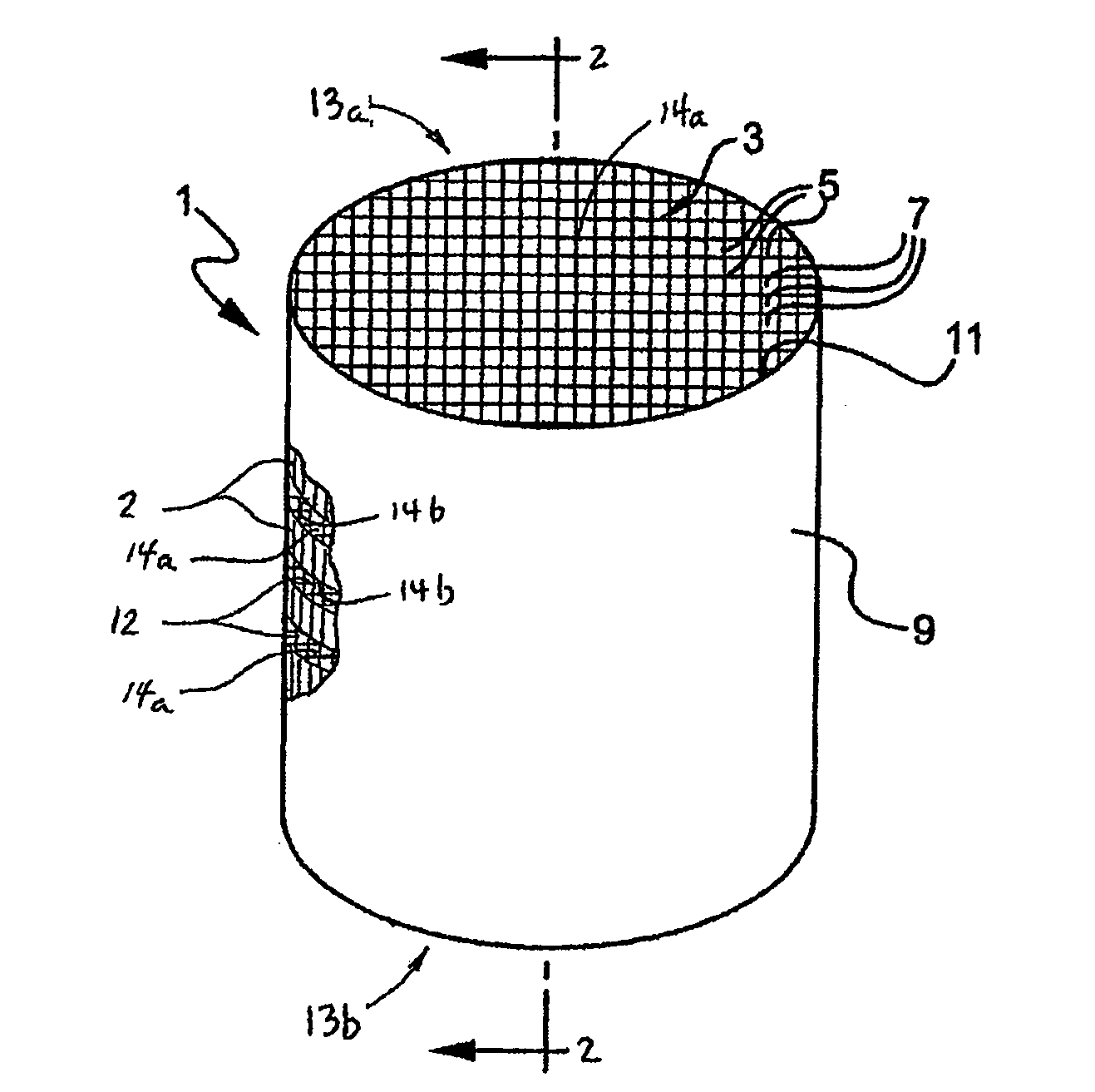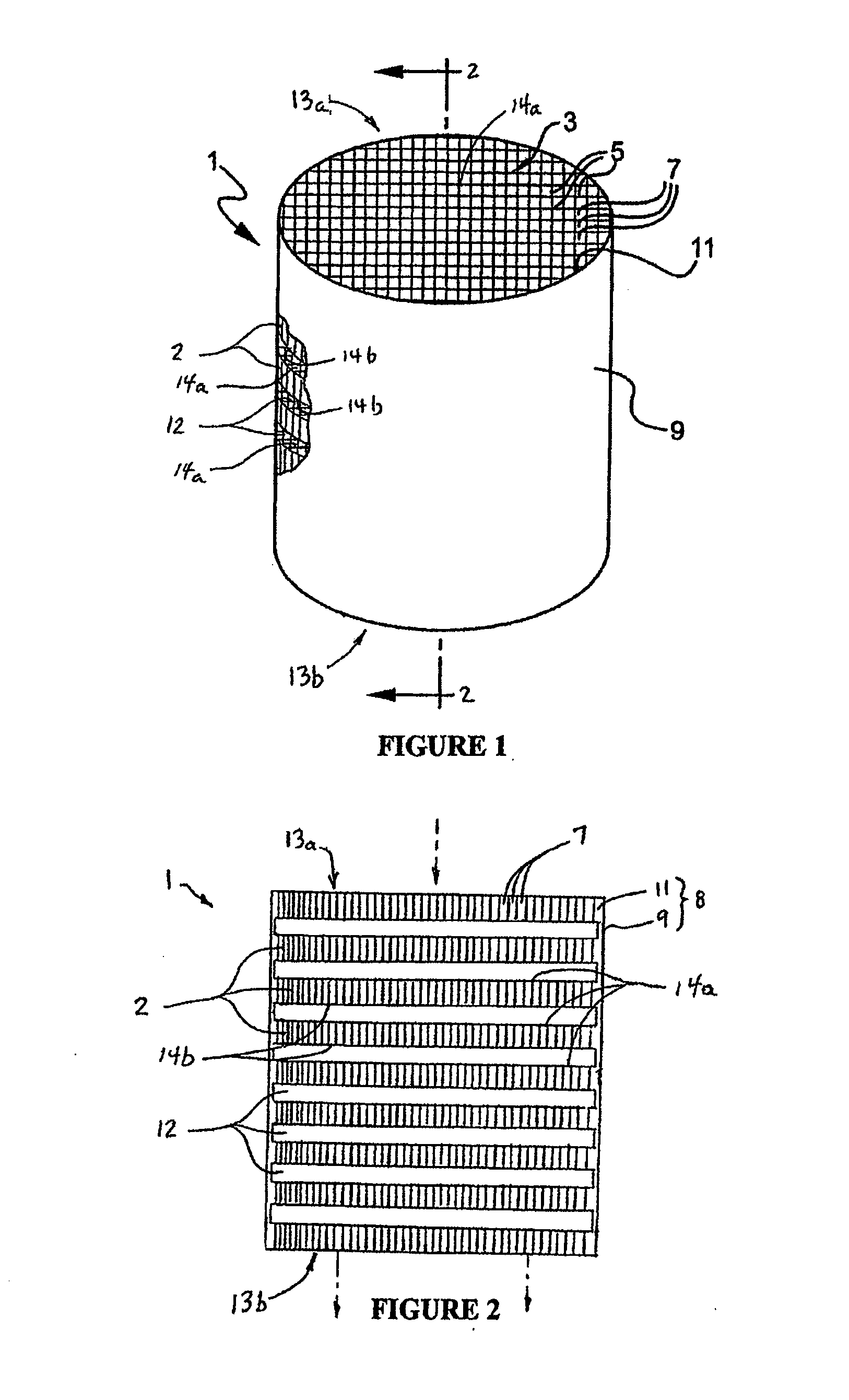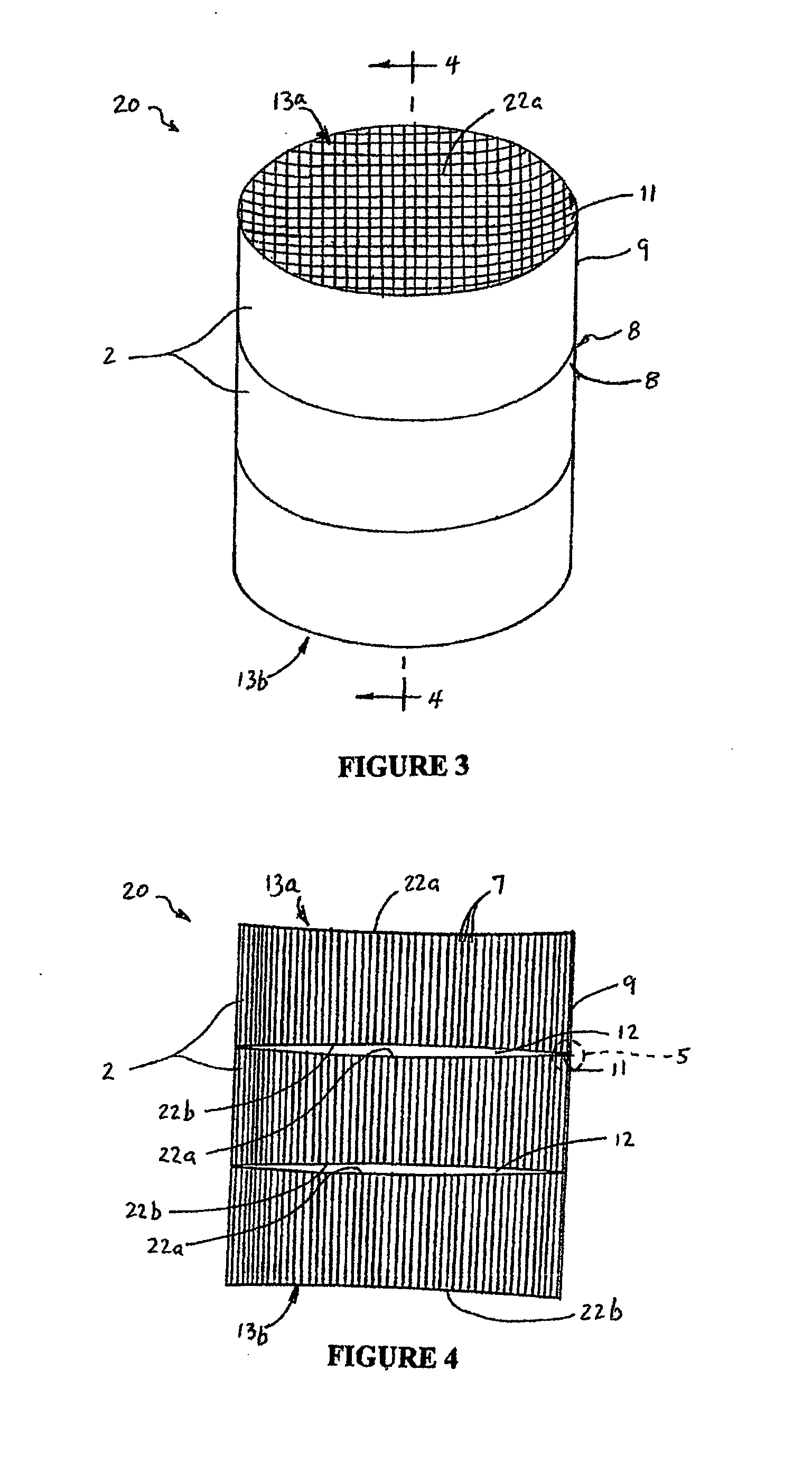Fluid treatment device having multiple layer honeycomb structure and method of manufacture
a technology of honeycomb and treatment device, which is applied in the direction of machinery/engines, domestic applications, chemical/physical processes, etc., can solve the problems of increasing the amount and hence the cost of precious metals used as catalysts, and the fluid mechanics between a predominantly laminar flow of exhaust gas and the cell walls of a standard honeycomb ceramic structure are not conducive to the efficient achievement of intimate contact, so as to achieve the effect of improving the performance of the devi
- Summary
- Abstract
- Description
- Claims
- Application Information
AI Technical Summary
Benefits of technology
Problems solved by technology
Method used
Image
Examples
example 1
Heat-Up Profiles
[0067]FIGS. 11A and 11B compare the amount of time required for a standard, continuous matrix ceramic honeycomb structure (FIG. 11A) and a discontinuous cell wall substrate (FIG. 11B) of the invention to obtain a temperature profile across their diameters that would be effective in activating a catalyst for breaking down automotive exhausts. The ceramic honeycomb structure used to obtain the graph of FIG. 11B had a matrix 3 formed from integrally formed, disc-shaped matrix layers 2 separated by axial air spaces 12 as illustrated in FIGS. 1 and 2. The diameter, cell density, web thicknesses and ceramic material 9 (aluminum titanate) of the two structures were identical (4.25 inches in length, 3.66 inches in diameter 600 / 4 substrate), the only difference being that the honeycomb structure embodying the invention shown in FIG. 11B had eight disc-shaped axial spaces in its web matrix 3 that defined axially spaced apart honeycomb layers 2. The temperature profiles were me...
example 2
Radial Thermal Profiles During Heat-Up
[0069]FIG. 12 compares the radial temperature profiles for a prior art, continuous ceramic honeycomb structure and a discontinuous cell wall substrate honeycomb structure embodying the invention having axially spaced-apart, integrally connected layers 2. Because the center of the horizontal axis corresponds to the axis of rotation of these two structures, it is somewhat easier to appreciate the differences in the two thermal profiles. As is the case with comparative FIGS. 11A and 11B, the diameter, cell density, web thicknesses and ceramic material of the two structures were identical, the only difference being that the honeycomb structure embodying the invention had disc-shaped spaces in its matrix 3 that defined eight axially spaced apart honeycomb layers 2. Measurements were taken from thermocouples located 67 mm from the inlet. These graphs clearly indicate that while the center sections of the two structures achieve about the same temperatu...
example 3
Back Pressure Comparisons
[0070]FIG. 13 compares the back pressure, or pressure drop, that a standard and a layered ceramic honeycomb structure, both of which were 3.66 inches in diameter, 4.25 inches in length 600 / 4 substrates, apply to an airflow ranging between 10 and 190 cfm (cubic feet per minute). As can be seen from a comparison of the two graphs, the pressure drop associated with a ceramic honeycomb structure of the invention (where eight, 0.25 inch sections of the web matrix have been removed to define matrix layers) is approximately 10% lower for an airflow of between about 10 and 170 cfm, thus underscoring still another advantage of the invention.
PUM
| Property | Measurement | Unit |
|---|---|---|
| Fraction | aaaaa | aaaaa |
| Fraction | aaaaa | aaaaa |
| Fraction | aaaaa | aaaaa |
Abstract
Description
Claims
Application Information
 Login to View More
Login to View More - R&D
- Intellectual Property
- Life Sciences
- Materials
- Tech Scout
- Unparalleled Data Quality
- Higher Quality Content
- 60% Fewer Hallucinations
Browse by: Latest US Patents, China's latest patents, Technical Efficacy Thesaurus, Application Domain, Technology Topic, Popular Technical Reports.
© 2025 PatSnap. All rights reserved.Legal|Privacy policy|Modern Slavery Act Transparency Statement|Sitemap|About US| Contact US: help@patsnap.com



